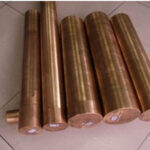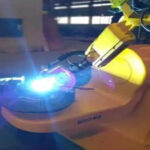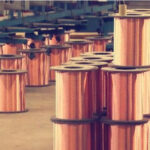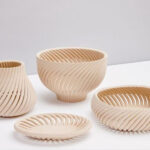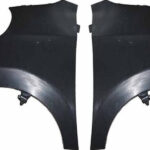Small and light bending machines are usually electric or hydraulic-electric hybrid. A few years ago, considering the low tonnage and bed length, the store may have abandoned them. After all, why invest in a machine that can only handle small parts in a workshop?
Fiber lasers have taken the cutting ability to another level, and now stores need to perform the same processing on the cutting ability. Offline programming and simulation can create a complex bending program in minutes, which means that tools that span the entire bed can be used to form complex parts. Because programming is automatic in nature, these settings make sense even for short runs.
With all this in mind, why send tiny parts to powerful large machines? The staged setup is very good, but if the job is always in the queue, waiting for the operator to complete the bending of a batch of small brackets, it is not very good. In this case, small electric brakes or hybrid brakes may make sense. In addition, small brakes are more flexible than ever. Some have robots that can be moved in and out as needed.
Because most of these small brakes only generate about 40 tons or less of forming pressure, they also open the door to a whole new field of flexibility. If one of these low-tonnage brakes does not have tools or special molding aids (such as guide pins, risers or backgauges), then why not use 3D printing?

The strength of printing tools
Table of Contents
There are countless examples in the Chicago FABTECH® 2019 showroom of how manufacturers can integrate additive manufacturing into their operations. For bending machine molds, the industry seems to be adopting two different methods. Various vendors are selling 3D printers, and manufacturers can use them to print tools themselves. For example, Cincinnati Inc. has always been an active participant in the AM field, and it is moving towards a 3D printer with a “recipe” customized for a specific tool set, and manufacturers can customize it for each tool.
Wilson Tool International, located in White Bear Lake, Minnesota, adopted the second method. The mold supplier will double as the AM service bureau, and work with customers to develop the best “add-on” brake tool design, and print punches and dies as required.
For most people, bending machine molds are not the first thing they think of when they think of 3D printing, at least outside the field of metal additives. Fused filament manufacturing (FFF) and other extrusion-based processes deposit thermoplastic polymers layer by layer, and their use continues to expand in prototyping and small batch production.
Engineers may think that non-load-bearing, low-volume plastic components are ideal for 3D printing, but for load-bearing components, there are not many. This is because many common printed products do not have isotropic strength characteristics. The strength value changes according to the direction of the force.
“When it comes to’additive manufacturing,’ many manufacturing companies think you just want to use a glue gun-like process to print it,” said Steve Brown, Wilson’s Bender Mold and Additive Manufacturing Product Manager. tool. “But there are many different kinds of printing processes.”
For example, in a resin-based printing process, light interacts with the material to convert it from liquid to solid. The product appears in solid form from liquid, which is very different from FFF printed products with thousands of microlayers.
Other adding processes can print a combination of materials. Brown described certain braking tools that require strength inside and cannot bend outside. Nylon tools with carbon fiber cores can provide both tools at the same time.
Brown said: “[The combination of carbon fiber and nylon] eventually became an economical method for printing press brakes.” “It’s really easy to use because the internal carbon fiber can increase the strength.”
Mark Watson, a marketing product expert at Cincinnati Inc., has taken the lead in making efforts to use Cincinnati’s small-size 3D printers in auxiliary fab applications, especially for bending machine tools. He said: “In the early tests, I have been proposing a limit of 1 ton per inch.” He added that this provides a good safety buffer for most applications that manufacturers consider printing.
But he emphasized that for manufacturers, testing printing tools for failure is an ideal choice, and for many printing tools, this is a small investment. The material cost of punches and molds made of typical thermoplastic polymers is extremely low. Usually only a $20 tool.
Pushing the tool to its limit always adds a certain degree of unpredictability. Printing tools are not particularly hard, so they usually crack cleanly. Watson said at the FABTECH exhibition: “But we are always very conservative in terms of safety.” He has a patent-pending printed V-die design. It has solid material under each shoulder, but there is an open cavity in the center, and a bridge or “fuse” at the bottom of the V shape. Push the tool hard and the fuse will break in a controlled manner. Watson added that the company’s punch inserts have a similar design.
The flexibility of 3D printing
“Insert” is the key word. As Watson explained, manufacturers equipped with 3D printers may choose to print the entire punch or die, but this takes time. At FABTECH, he showed a mold that took seven hours to print, while punching took six hours.
For a truly flexible bending environment using printing tools, Watson recommends that shops start with a library of standard tools. Then, when the custom job arrives, the shop can design the exact punch and die geometry required. This can shorten the printing time, and if the base is made of steel or other strong materials, the overall strength of the tool can be improved.
The 3D printed plug-in can also be used as an adapter. Assuming that the operator needs to bend vital materials on cosmetics; printed inserts can slide on existing V-shaped molds and can replace polyurethane drape. The insert can also be used to narrow the mold opening to achieve a specific bending radius. In fact, a common long V-shaped die can accommodate two different inserts, which provide two different V-shaped openings side by side.
For large-radius bends, the punch (or the entire punch tool) can be printed according to precise specifications. Brown described a situation in which a manufacturer who made thin stainless steel or aluminum needed 1 inch of space. Internal bending radius. In order to make the material wrap around the circular punch and spring back the required 1 inch. Radius, the shop may use a 0.625 inch round punch. Or 0.750 inch radius, depending on the exact material and thickness-it is this “dependency” that causes the difficulty. Off-the-shelf punches often fail to arrive at the exact radius required by the application.
Here, custom tools are usually used. As Brown of Wilson Tool explained, there is no reason why this circular punch cannot be printed. The mold openings in these applications are usually wider, which reduces the required forming tonnage.
He said: “3D printing is a huge opportunity here.” “This is a low-tonnage application. And you can print quickly, test quickly, and get the radius correct in a short time.”
The lifter also provides opportunities for 3D printing. At FABTECH, Cincinnati demonstrated how the impression lifter can lift the bending plane to provide enough space for the negative flange to clear the laser-based angle measurement equipment under the tool. These risers also happen to have an expiration date printed on them.
Watson said: “Suppose the operator uses these risers first, then removes them, and then places them near the windows outside.” “Ultraviolet rays (entering through the windows) may change the printing materials in these risers. Crisp. So I gave them a one-month expiration date. But again, it only costs $20.”
Printed custom risers can also help create a universal closing height tool set for segment settings. Watson said: “Suppose you have an offset mold next to the V mold, but the right workstation will collapse unless there is a riser.” The problem is that to create a universal closing height, you need to raise the height of the board. It is 1.19 inches. “Where can I find a 1.19-inch riser board?” Here, the use of 3D printing can make all this meaningful.
Brown added that the accuracy of a printed riser or mold bracket is different from the accuracy of a tool steel bracket for machining tolerances. But the 3D printing tolerance may be close enough, maybe 0.002 inches. The difference between stations. “Remember, we are not in a high-tonnage environment,” he said.
For low tonnage applications, these can be used as mold holders. You will design the most powerful tool that can bottom out without material, but if it is only 0.002 inches, you will not be able to see it. And the app will not care,” Brown said.
3D printing is not ideal for all tool geometries, especially those that put a lot of pressure on the tool. If the operator needs a hole punch to allow a deep return flange gap, printing is not the best method.
The same goes for deep gooseneck. The standard gooseneck is very deep, so it can accept various return flanges. But according to Watson, certain jobs that can be bent with a standard gooseneck may not require all the clearance provided by the gooseneck. In some cases, slightly perforated punch printing (leave enough clearance for the deepest return flange in a particular part) may be an effective strategy to quickly complete one-time or short-term work and go out immediately .
The source also admitted that the tool life of any custom printing tool cannot be compared with the life of similar steel tools. Rugged printing materials have the potential for longer service life, but they are also more costly. In any case, on low-tonnage small bending machines, even cheap printing polymers can last a long time, which is of commercial significance.
Flexible electrical
Imagine a small electric bending machine with standard tools. All tools can be conveniently stored in adjacent drawers. Next to it is a set of steel seats, all of which can be connected to the printed die and punch.
Approximately 80% of the work uses standard punches and dies. The remaining jobs will be printed out, either sent to the Additive Services Bureau, or printed in an internal 3D printer library adjacent to the project in the headquarters office. Considering that they usually only need a part of the printing tool instead of the base, the printer does not need to take a long time. The printing plant also produces forming aids such as inspection gauges, customized backstop fingers and pins.
These tools and auxiliary tools are printed, and because most tools and auxiliary tools are destined to be small machines for short bends, they are usually small and light enough to slide into working travelers. The printed tool will be exported to the brake’s bending software, which can simulate the bending sequence offline and export the program to the controller. All of these effectively make the smallest bending machine in the factory have the greatest flexibility and the highest productivity.
3D printing of brake tools is still in its infancy. Shops that try printing tools cannot learn from decades of tool design experience. In this sense, early adopters have found the tip of the iceberg. Unknown things abound, but so are possibilities.
Link to this article: 3D printing tools can make low-tonnage bending machines more flexible
Reprint Statement: If there are no special instructions, all articles on this site are original. Please indicate the source for reprinting:https://www.cncmachiningptj.com/,thanks!
 Sheet metal, beryllium, carbon steel, magnesium, 3D printing, precision CNC machining services for heavy equipment, construction, agriculture and hydraulic industries. Suitable for plastics and rare alloys machining. It can turn parts up to 15.7 inches in diameter. Processes include swiss machining,broaching, turning, milling, boring and threading. It also provides metal polishing, painting, surface grinding and shaft straightening services. The production range is up to 50,000 pieces. Suitable for screw, coupling, bearing, pump, gearbox housing, drum dryer and rotary feed valve applications.PTJ will strategize with you to provide the most cost-effective services to help you reach your target,Welcome to Contact us ( [email protected] ) directly for your new project.
Sheet metal, beryllium, carbon steel, magnesium, 3D printing, precision CNC machining services for heavy equipment, construction, agriculture and hydraulic industries. Suitable for plastics and rare alloys machining. It can turn parts up to 15.7 inches in diameter. Processes include swiss machining,broaching, turning, milling, boring and threading. It also provides metal polishing, painting, surface grinding and shaft straightening services. The production range is up to 50,000 pieces. Suitable for screw, coupling, bearing, pump, gearbox housing, drum dryer and rotary feed valve applications.PTJ will strategize with you to provide the most cost-effective services to help you reach your target,Welcome to Contact us ( [email protected] ) directly for your new project.
Link to this article:3D printing tools can make low-tonnage bending machines more flexible
Reprint Statement: If there are no special instructions, all articles on this site are original. Please indicate the source for reprinting.:Cnc Machining,Thank!^^

